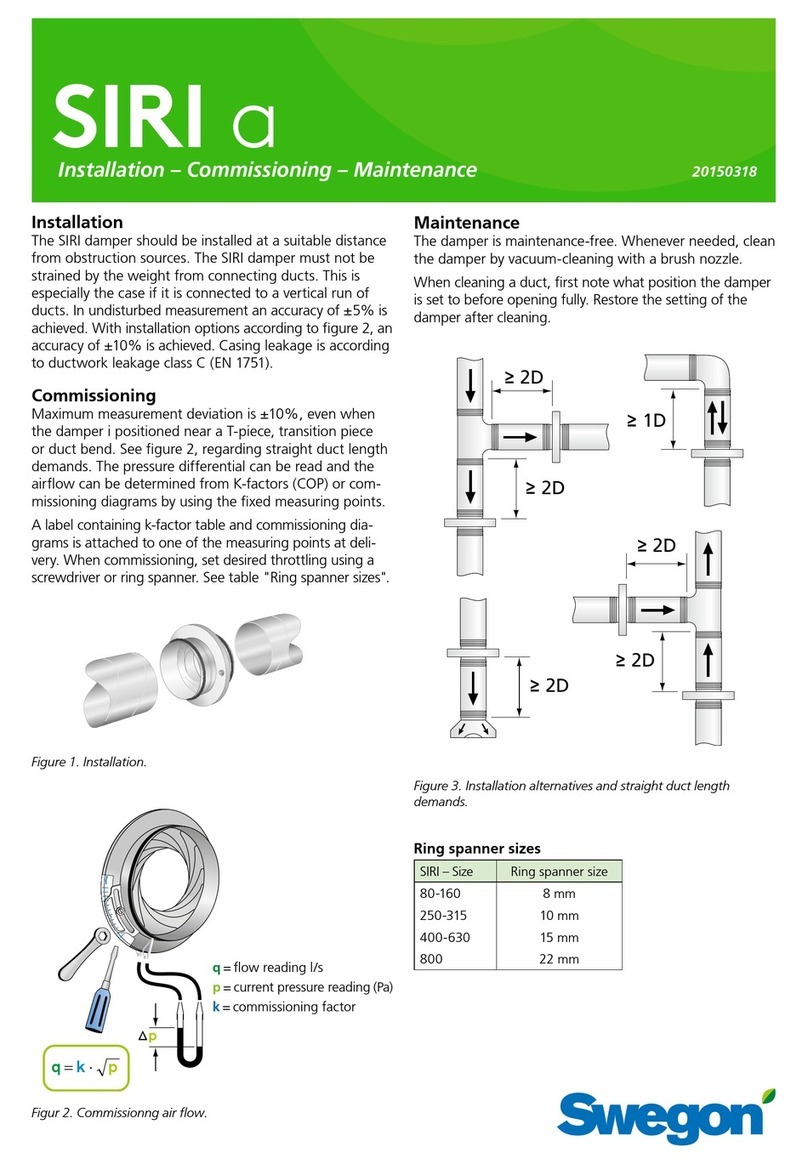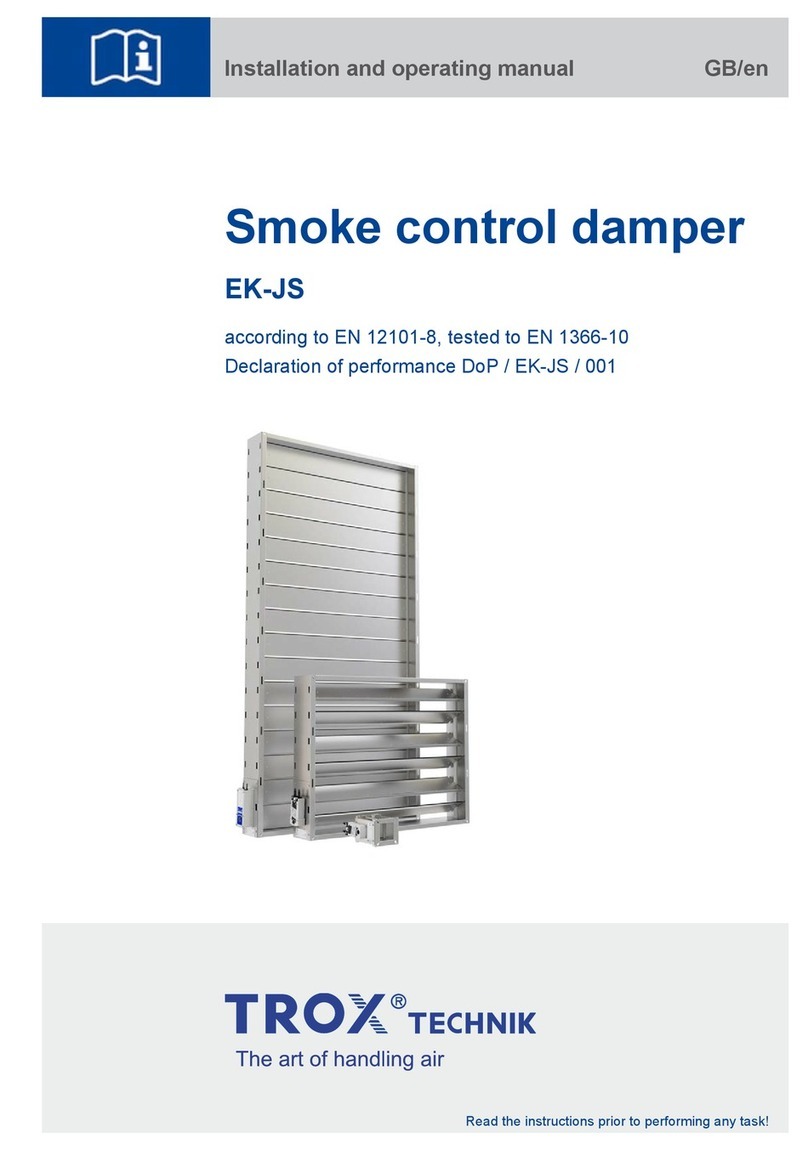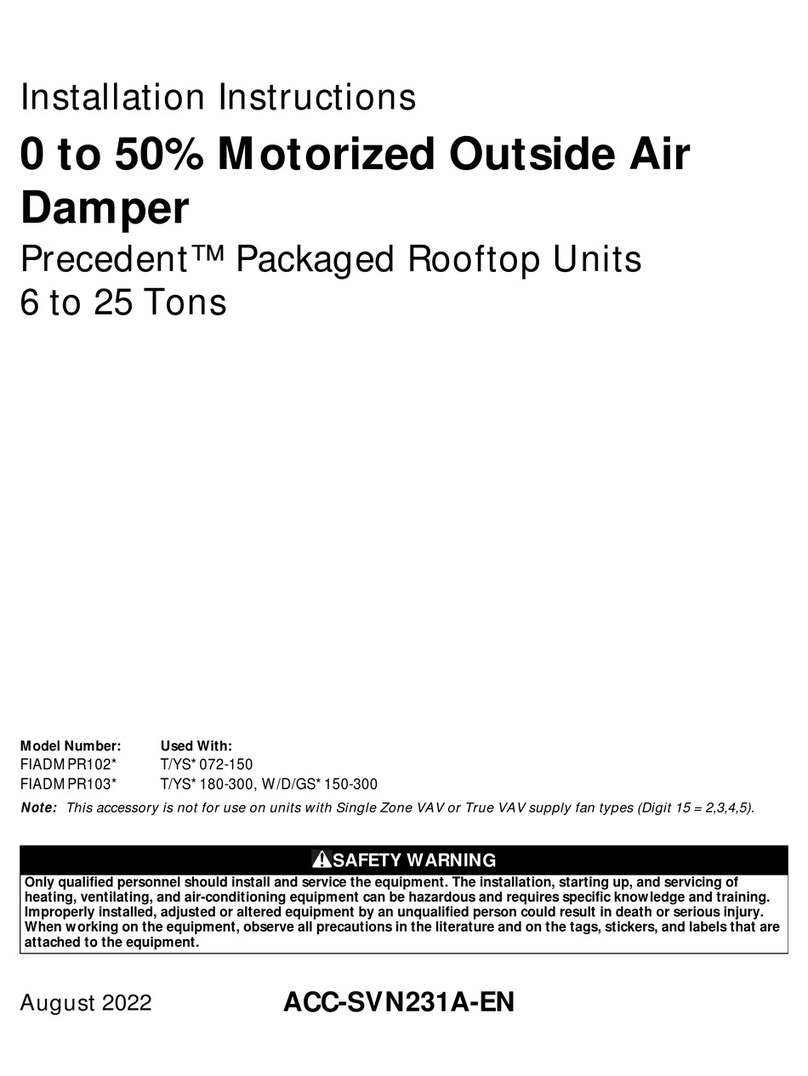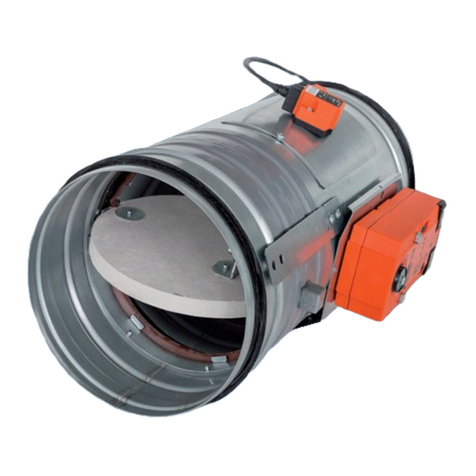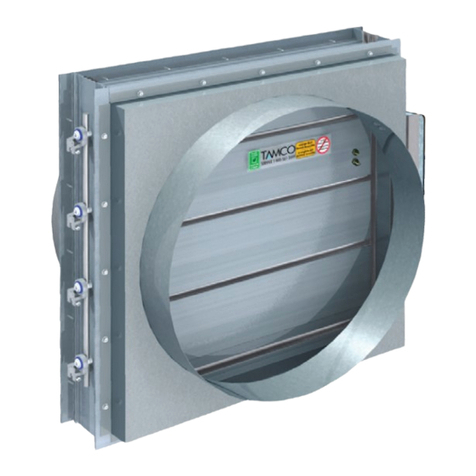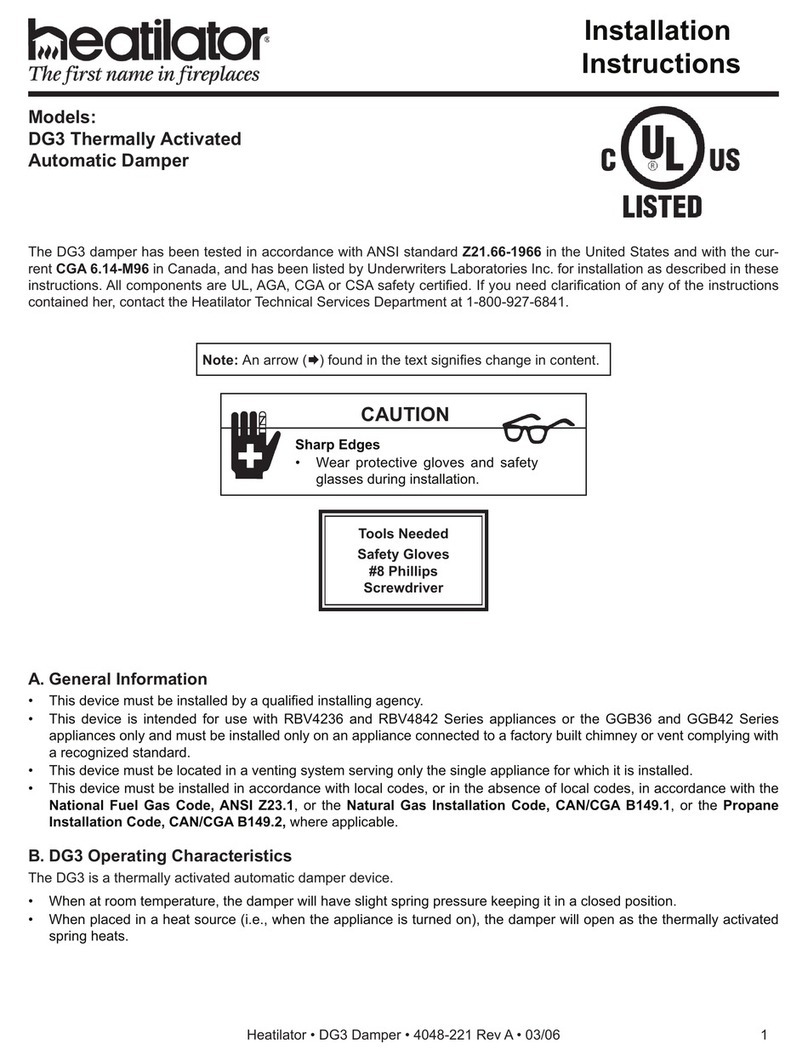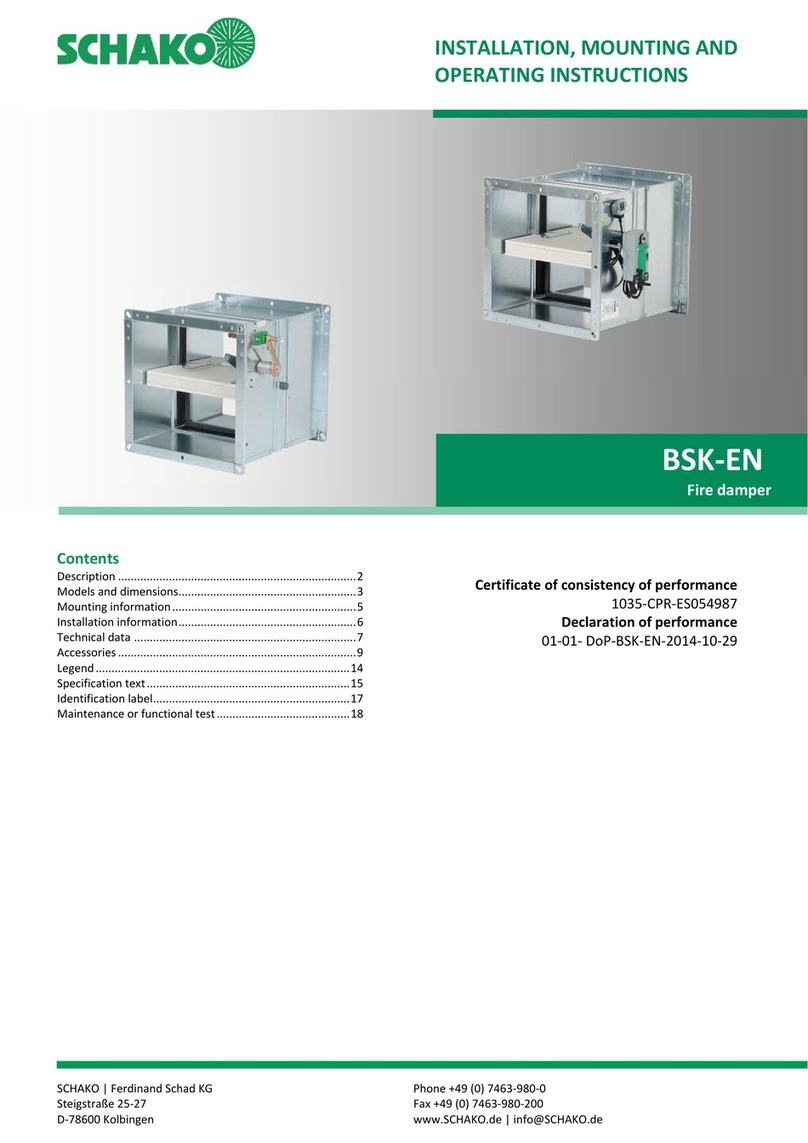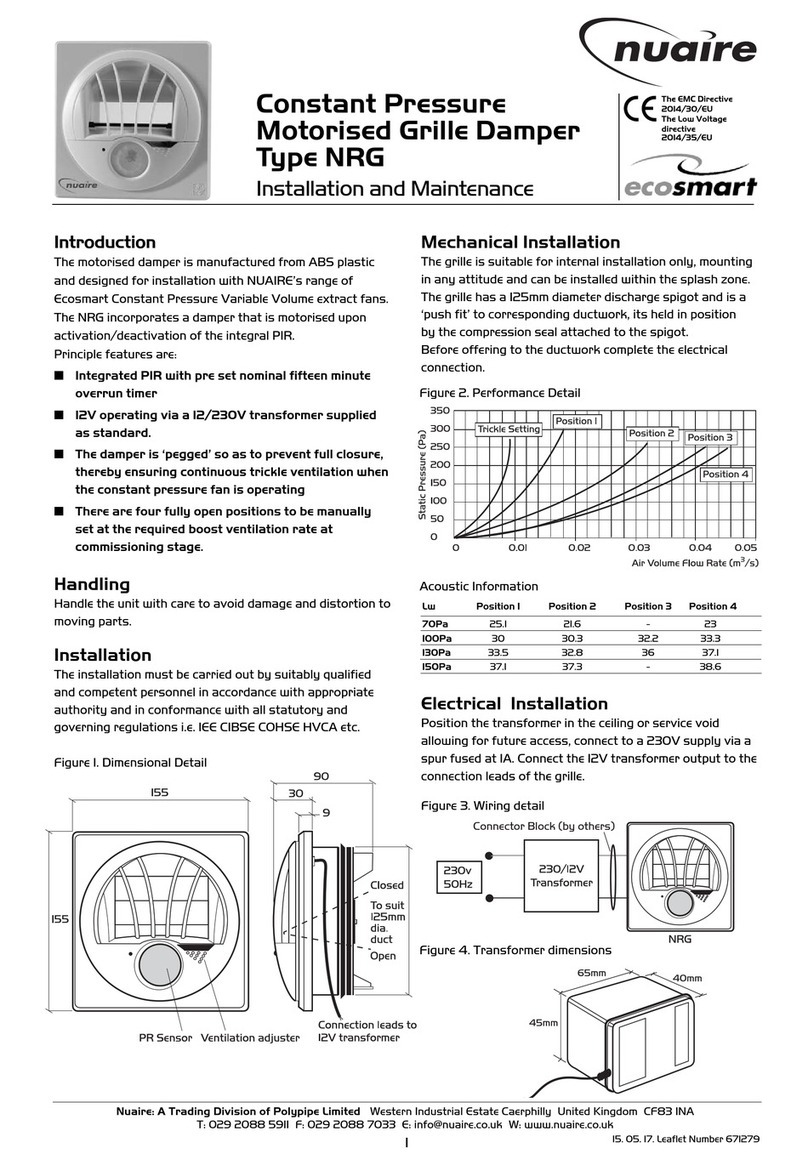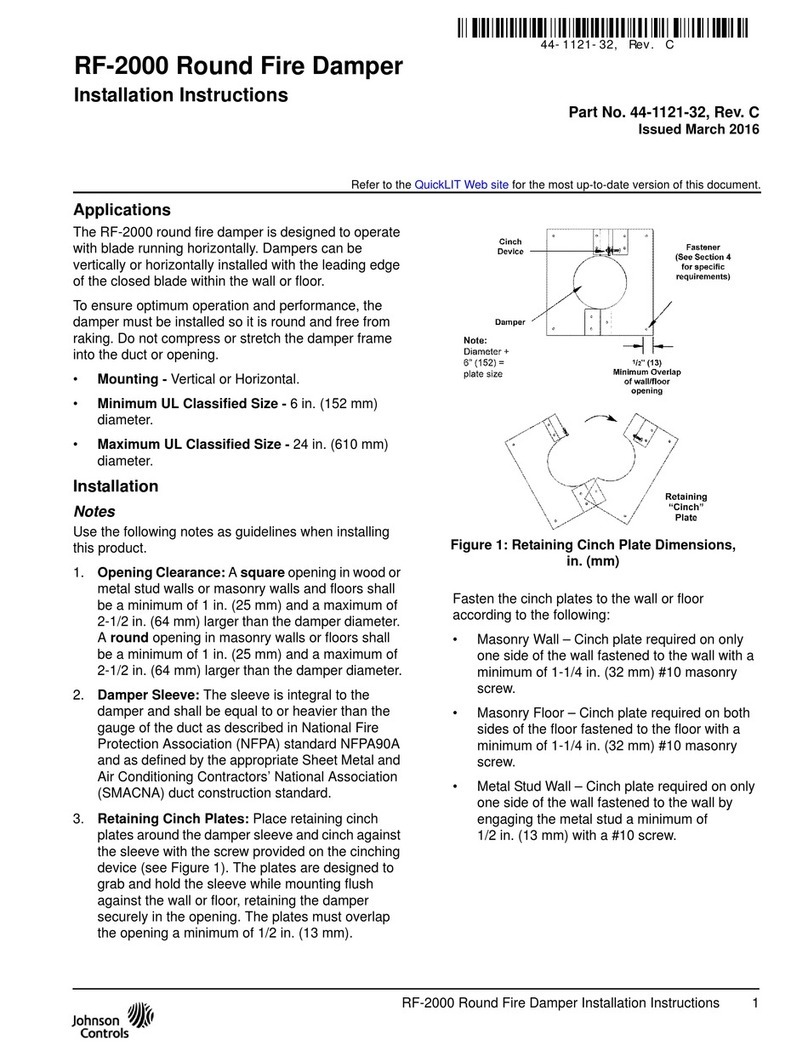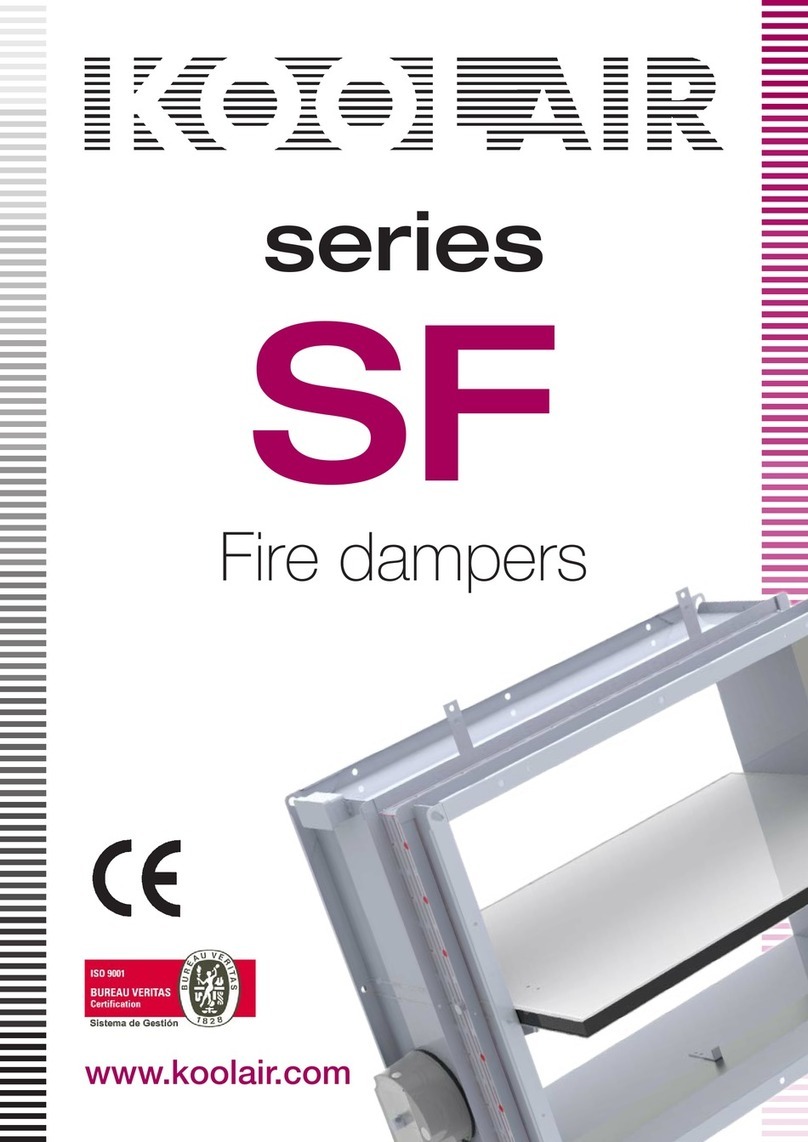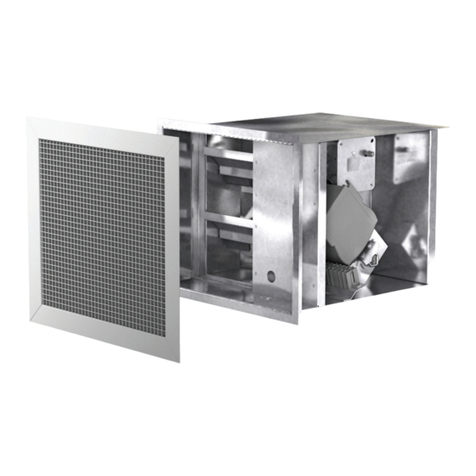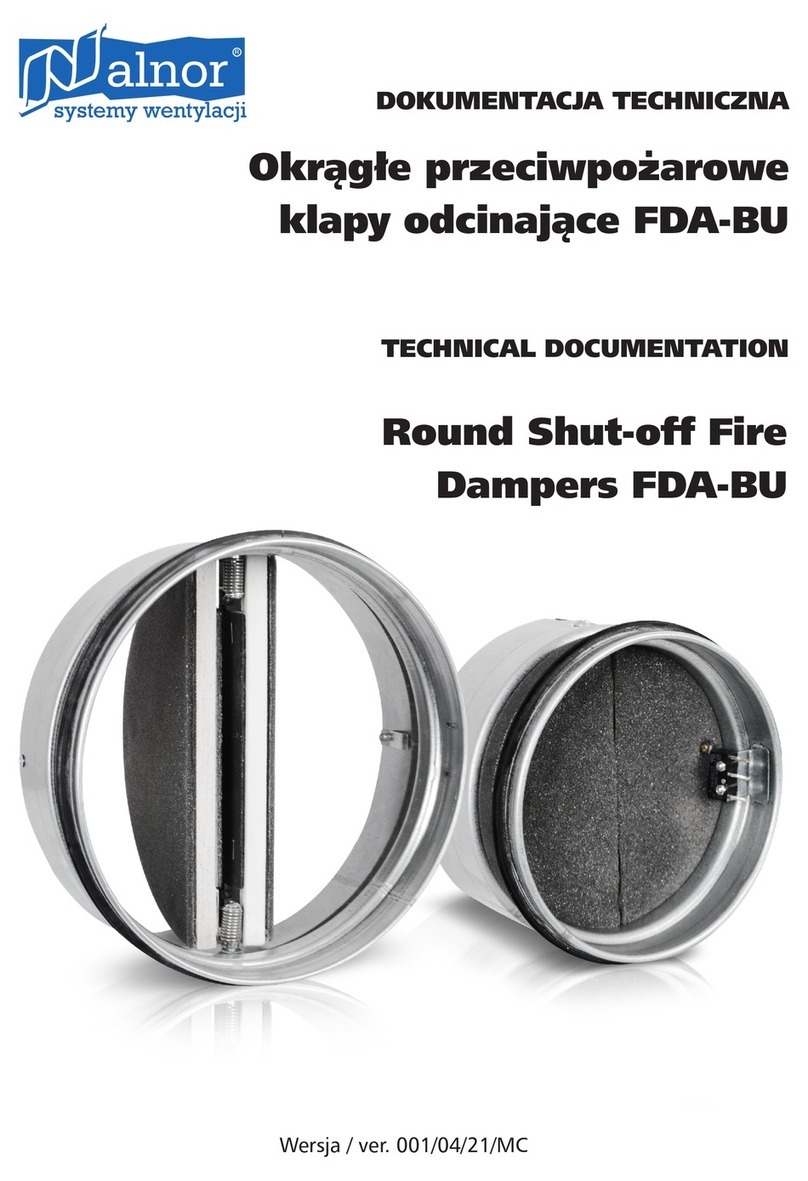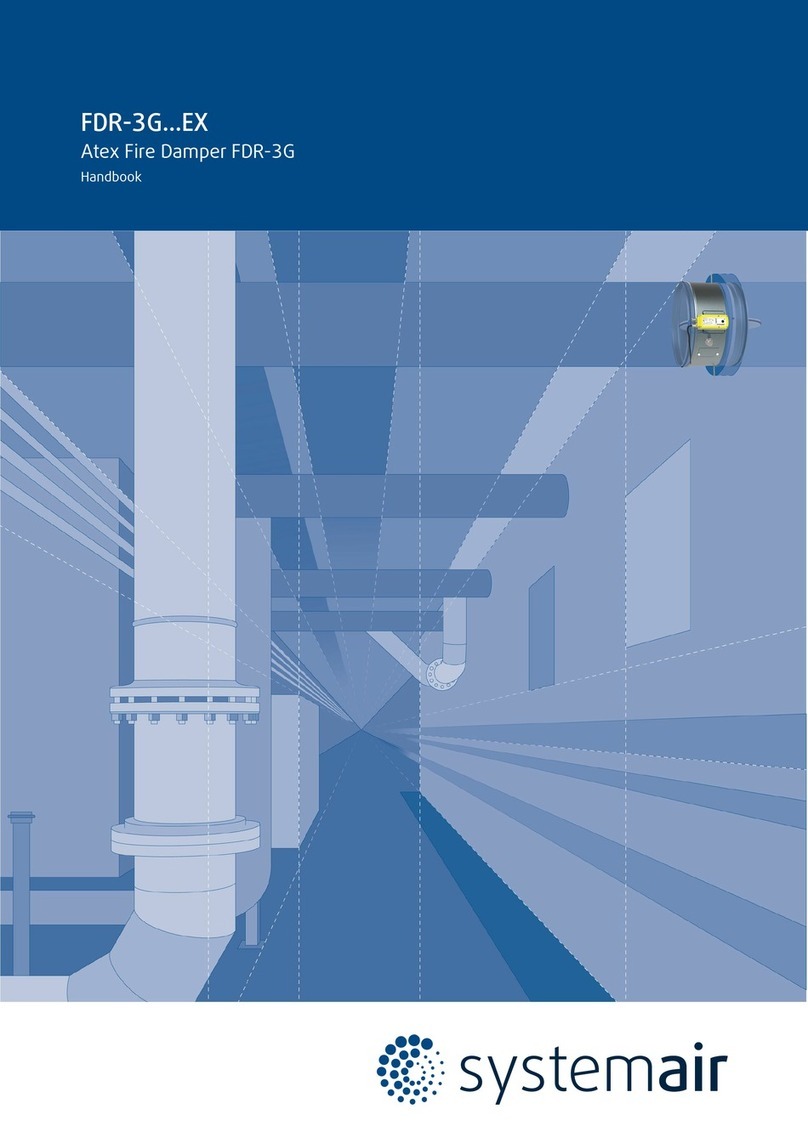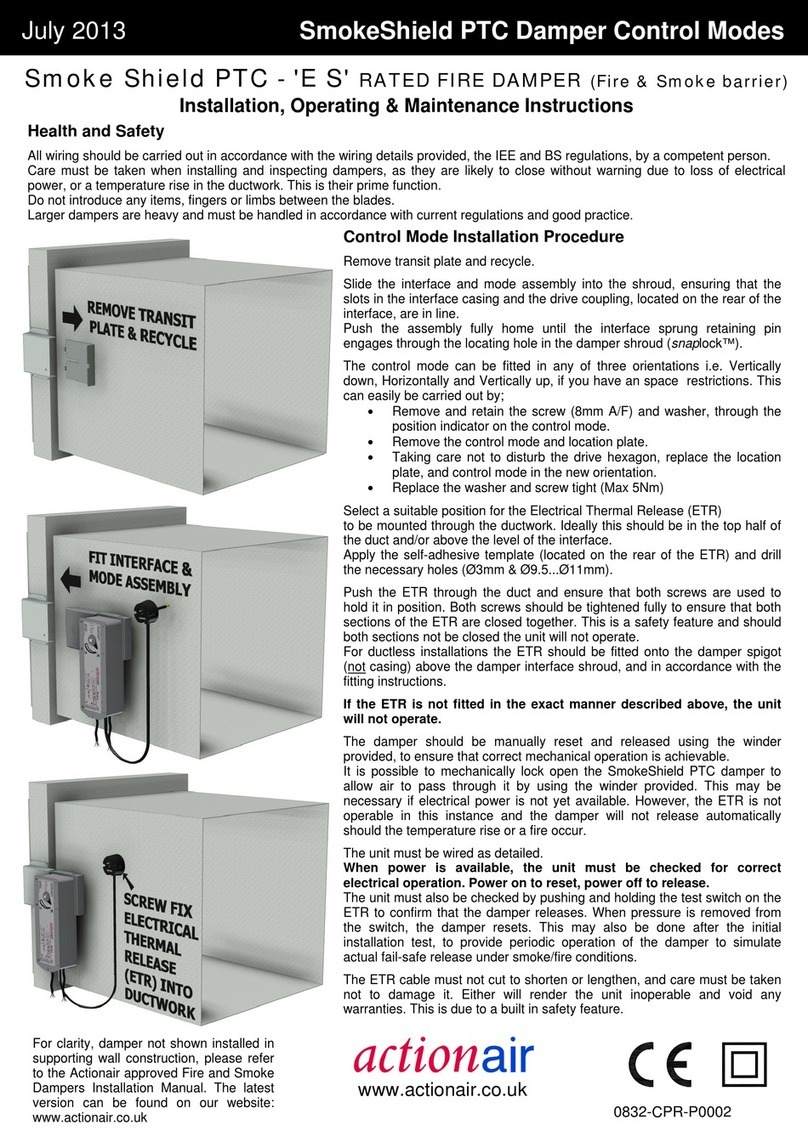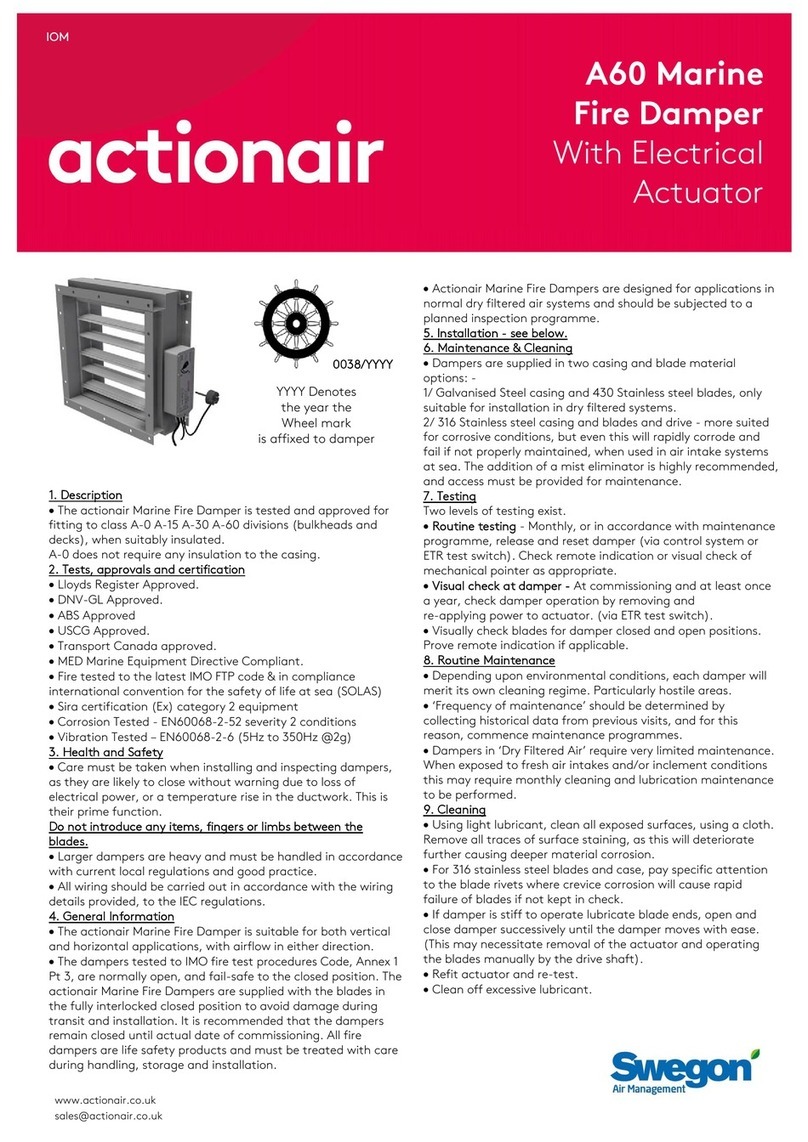
Assessed to ISO 9001:2008
LPCB Cert No. 17
LPS1162 Cert No. 017a
South Street, Whitstable,
Kent, CT5 3DU
Tel: +44 (0)1227 276100
Fax: +44 (0)1227 264262
Email: sales@actionair.co.uk
Website: www.actionair.co.uk
Replacement of Mode & ETR on CSS Dampers
Remove ETR
Undo the 2 self tapping screws with a No.1 Pozidriv
screwdriver and remove the ETR from the hole.
Undoing the 2 screws allows separation of the two
pieces of the ETR. Replace the old ETR with new.
Aligning, tensioning and tting mode
The damper blade is designed to be pre-tensioned
with the mode tted. To ease mode tting the
following is necessary. Wind mode manually 1½ turns
clockwise and ½ turn anticlockwise quickly to lock
for fail-safe-closed position, to align the 2 xing screw
holes. Fit mode to bracket screws through mode
and into bracket then t nuts (they are embossed
to stop them coming loose). Fit screw supplied with
mode through mudguard washer and into the drive
shaft. Tighten screw into the shaft on the mode end
5Nm Max torque. Fully reset and release actuator by
manually winding to fully open, then release, noting
blade contacts both ‘blade stop’ positions using
manual reset key (3mm cranked allen key supplied).
Fit new ETR or replace ETR thermal probe
For damper sizes greater than Ø100mm t the ETR
into the pre-punched hole in the circular case using
a No.1 Pozidriv screwdriver to tighten the two self
tapping screws supplied with the ETR.
For damper size Ø100mm t to pre-punched hole
in the side of mode bracket and through a grommet
in case beneath. Tighten using a No.1 Pozidriv
screwdriver to tighten the two self tapping screws
supplied with the ETR. NOTE fully tighten the ETR
so that its two part case is completely together to
ensure electrical continuity inside.
Electrical Connection and Final Operational Test
When power is available, the unit must be checked
for electrical operation. Power on to motor open,
power o to spring close (fail-safe-closed). The unit
must also be checked by pushing and holding the
test switch on the ETR to conrm that the damper
closes. When pressure is removed from the switch
the damper will reopen. This may be done after the
initial installation test to provide periodic operation of
the damper to simulate actual fail-safe-closure under
re conditions. Note: Supply voltage will automatically
override the manual locking mechanism.
Remove Mode Fasteners
Unscrew and remove the two bolts holding the
mode to the bracket using a 5mm allen key.
Unscrew and remove the bolt and washer holding
the mode to the shaft using an 8mm A/F spanner.
Do not to lose the xings these will be reused later.
Check damper blade starting position
Damper blade in closed position for the ‘Fail-Safe-
Closed’. It is also a good opportunity to check the
condition of the white seal around the circumference
of the blade for any damage.
Orientation of mode
The mode can be tted in one of three positions
depending on preference this is the time to decide.
LNNN00356 (4.1)




